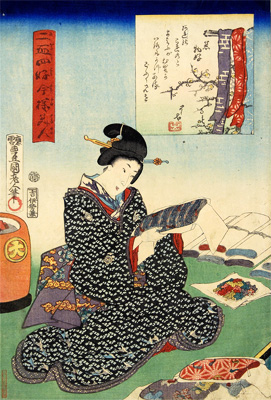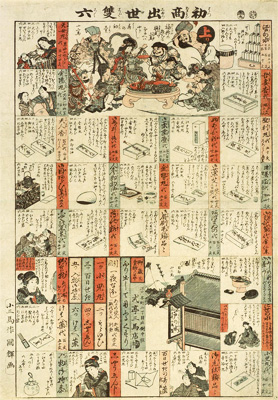Great-Edo Style
Great-Edo Fashion / Great-Edo GourmetThe Coming of Kosode Age
(Nijūshi Kō Imayō Bijin)
Painted by Utagawa Toyokuni III
1863 (Bunkyū 3)
When thinking of Edo Period clothing, there is a widely-held perception that Edo's population wore kimono with smaller sleeves (kosode). However, such clothing was originally a form of undergarment, whose usage was transformed as many people within the city began wearing such undergarments as a form of outerwear during the Edo period. This trend was evident throughout society, irrespective of age, gender, occupation or class.
(Hatsuakinai Shusse Sugoroku)
Written by Kosanba and painted by Utagawa Kuniteru
1854 (Ansei 1)
Kosode is a type of kimono with smaller sleeves that the people used to wear in Japan. The form of wearing kosode remained unchanged throughout the Edo period. However, different types of kosode in terms of its colours and designs on the fabric were adopted according to the period and class in which each person lived or belonged to. Especially, the design on the fabric of kosode was dramatically altered in the middle of the Edo period. The transition was triggered by a new epoch-making technique called"Yûzen dyeing"that was developed in Kyoto and won widespread acceptance across the country. This technique enabled the people to use as many colours as they wanted on the fabric. After this invention, the designers produced many different kosode with different patterns and designs.
* To view more explanation, please click the each image.



